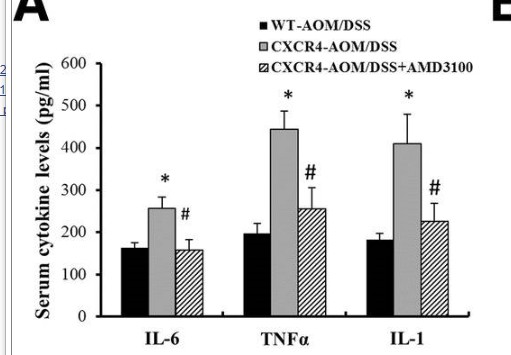Total Smad4 Cell-Based Colorimetric ELISA Kit
- Catalog No.:KA3716C
- Applications:ELISA
- Reactivity:Human;Mouse;Rat
- Gene Name:
- SMAD4
- Human Gene Id:
- 4089
- Human Swiss Prot No:
- Q13485
- Mouse Swiss Prot No:
- P97471
- Rat Swiss Prot No:
- O70437
- Storage Stability:
- 2-8°C/6 months
- Other Name:
- Mothers against decapentaplegic homolog 4 (MAD homolog 4) (Mothers against DPP homolog 4) (Deletion target in pancreatic carcinoma 4) (SMAD family member 4) (SMAD 4) (Smad4) (hSMAD4)
- Detection Method:
- Colorimetric
- Background:
- disease:Defects in SMAD4 are a cause of juvenile polyposis syndrome (JPS) [MIM:174900]; also known as juvenile intestinal polyposis (JIP). JPS is an autosomal dominant gastrointestinal hamartomatous polyposis syndrome in which patients are at risk for developing gastrointestinal cancers. The lesions are typified by a smooth histological appearance, predominant stroma, cystic spaces and lack of a smooth muscle core. Multiple juvenile polyps usually occur in a number of Mendelian disorders. Sometimes, these polyps occur without associated features as in JPS; here, polyps tend to occur in the large bowel and are associated with an increased risk of colon and other gastrointestinal cancers.,disease:Defects in SMAD4 are a cause of juvenile polyposis/hereditary hemorrhagic telangiectasia syndrome (JP/HHT) [MIM:175050]. JP/HHT syndrome phenotype consists of the coexistence of juvenile polyposis (JIP) and hereditary hemorrhagic telangiectasia (HHT) [MIM:187300] in a single individual. JIP and HHT are autosomal dominant disorders with distinct and non-overlapping clinical features. The former, an inherited gastrointestinal malignancy predisposition, is caused by mutations in SMAD4 or BMPR1A, and the latter is a vascular malformation disorder caused by mutations in ENG or ACVRL1. All four genes encode proteins involved in the transforming-growth-factor-signaling pathway. Although there are reports of patients and families with phenotypes of both disorders combined, the genetic aetiology of this association is unknown.,disease:Defects in SMAD4 are a cause of pancreatic carcinoma [MIM:260350].,disease:Defects in SMAD4 may be a cause of colorectal cancer (CRC) [MIM:114500].,function:Common mediator of signal transduction by TGF-beta (transforming growth factor) superfamily; SMAD4 is the common SMAD (co-SMAD). Promotes binding of the SMAD2/SMAD4/FAST-1 complex to DNA and provides an activation function required for SMAD1 or SMAD2 to stimulate transcription. May act as a tumor suppressor.,PTM:Monoubiquitinated on Lys-519 by E3 ubiquitin-protein ligase TRIM33. Monoubiquitination hampers its ability to form a stable complex with activated SMAD2/3 resulting in inhibition of TGF-beta/BMP signaling cascade.,similarity:Belongs to the dwarfin/SMAD family.,similarity:Contains 1 MH1 (MAD homology 1) domain.,similarity:Contains 1 MH2 (MAD homology 2) domain.,subcellular location:Cytoplasmic in the absence of ligand. Migrates to the nucleus when complexed with R-SMAD.,subunit:May form trimers with receptor-regulated SMAD (R-SMAD). Found in a ternary complex composed of SMAD4, STK11 and STK11IP. Interacts with ATF2, COPS5, DACH1, MSG1, SKI, STK11, STK11IP and TRIM33. Associates with ZNF423 or ZNF521 in response to BMP2 leading to activate transcription of BMP target genes. Interacts with USP9X.,
- Function:
- regulation of cell growth, urogenital system development, metanephros development, ureteric bud development,branching involved in ureteric bud morphogenesis, response to hypoxia, gastrulation with mouth forming second,morphogenesis of a branching structure, regulation of cytokine production, kidney development, regulation of protein amino acid phosphorylation, positive regulation of protein amino acid phosphorylation, morphogenesis of an epithelium, regionalization, transcription, regulation of transcription, DNA-dependent, regulation of transcription from RNA polymerase II promoter, protein complex assembly, cell surface receptor linked signal transduction, enzyme linked receptor protein signaling pathway, transmembrane receptor protein serine/threonine kinase signaling pathway,transforming growth factor beta receptor signaling pathway, SMAD protein complex assembly, gastrulation, patte
- Subcellular Location:
- Cytoplasm . Nucleus . Cytoplasmic in the absence of ligand. Migrates to the nucleus when complexed with R-SMAD (PubMed:15799969). PDPK1 prevents its nuclear translocation in response to TGF-beta (PubMed:17327236). .
- June 19-2018
- WESTERN IMMUNOBLOTTING PROTOCOL
- June 19-2018
- IMMUNOHISTOCHEMISTRY-PARAFFIN PROTOCOL
- June 19-2018
- IMMUNOFLUORESCENCE PROTOCOL
- September 08-2020
- FLOW-CYTOMEYRT-PROTOCOL
- May 20-2022
- Cell-Based ELISA│解您多样本WB检测之困扰
- July 13-2018
- CELL-BASED-ELISA-PROTOCOL-FOR-ACETYL-PROTEIN
- July 13-2018
- CELL-BASED-ELISA-PROTOCOL-FOR-PHOSPHO-PROTEIN
- July 13-2018
- Antibody-FAQs


